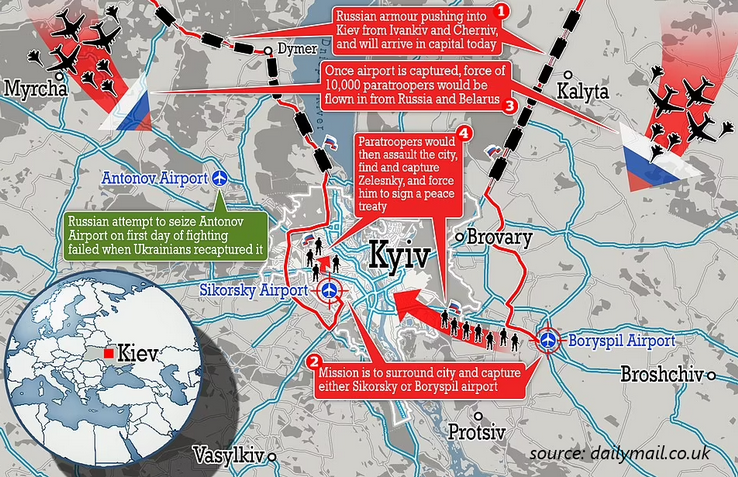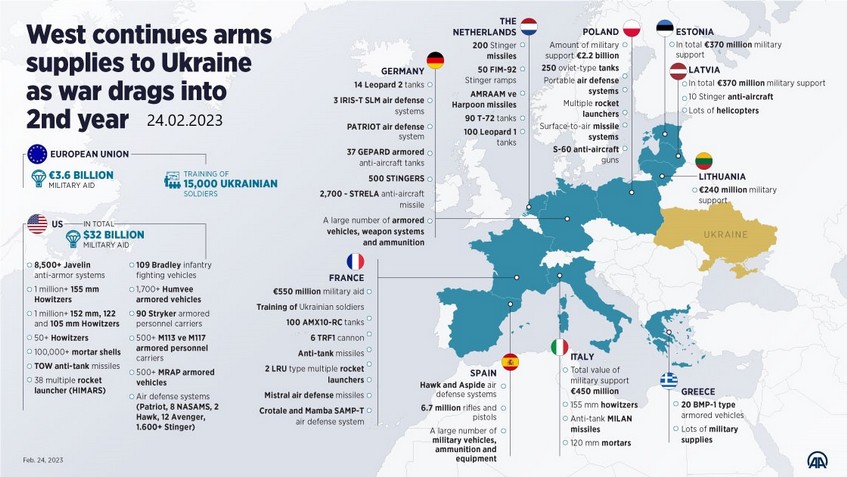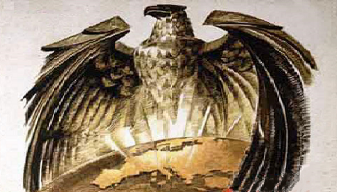The main weaknesses in Russian warfare Ukraine
Russias War in Ukraine 2022
The main weaknesses in Russian warfare as revealed in the war against Ukraine
Russia's war in Ukraine, unlike those in Georgia and Syria, is Russia's first major war in recent times. It is now also possible to observe how they conduct it, where Russia's strengths and weaknesses in warfare are. In my opinion, the Russians made two big mistakes in the Ukraine war: the first one, back in February 2022, when their 60-kilometer convoy got stuck near Kiev and they failed to capture the Antonov/Hostomel airport, and the second one, when they failed to block the western and southern parts of the country for arms deliveries from the west.
Russia's war in Ukraine, unlike those in Georgia and Syria, is Russia's first major war in recent times. It is now also possible to observe how they conduct it, where Russia's strengths and weaknesses in warfare are. In my opinion, the Russians made two big mistakes in the Ukraine war: the first one, back in February 2022, when their 60-kilometer convoy got stuck near Kiev and they failed to capture the Antonov/Hostomel airport, and the second one, when they failed to block the western and southern parts of the country for arms deliveries from the west.
1. the blitzkrieg-strategy fails at Kyiv

On February 24, Russia attacked Ukraine with armor and airborne forces on four fronts: from the north from Belarus and from the northeast towards Kyiv, from the eastern front towards Kharkiv and from the southern front, i.e. from the already occupied Crimea, west toward Odesa, north toward Zaporizhzhia, and east toward Mariupol. Russia attacked with 110 Battalion Tactical Groups (BTGs), that is approximately 142,000 forces. Besides, it utilized irregular forces, as the militias from Donetsk and Luhansk (1). According to Russian planning they were thought to invade Ukraine over a 10-day period, then, as a captured document puts it, ‘proceed to the blocking and destruction of individual scattered units of the Armed Forces and the remnants of nationalist resistance units’ and occupy the country to enable annexation by August 2022. By this way an international response was thoungt to be made irrelevant (2).
But already on the first day of the invasion the whole blitzkrieg-strategy begins to fail, with the result of the beginning logistical problems: what would become the famous 56 km column north of Kyiv was, according to the Ukrainian Armed Forces, in fact 10 separate Russian tactical battalion units, which had the task to overthrow Ukraine's capital city and to remove the government. Whithin eleven hours after crossing the border from Belarus the first batallion was planned to arrive at Kyiv, exactly on 24th February, 14:55. But the Russian leadership had ignored the local weather and the terrain, and thus, the vehicles soon drove straight into the mud and had to be diverted to paved roads in order to avoid soft ground. So, thousands of them were forced into a single column that soon included 1,000 tanks, 2,400 mechanised infantry vehicles and 10,000 personnel, as well as dozens of supply trucks carrying food, fuel, oil and ammunition. And the Ukrainian artillery and air force attacked it, while others blew up bridges and dams ahead of this convoy. The result was a traffic jam of 56 km length at 28th February which was finally brought to a standstill just outside of Kyiv's city boundary (3).
As for the Antonov Airport, also here the Russians failed to get it under control in time to fly in 10.000 paratroopers who would have captured President Zelensky and had him sign a peace agreement that would hand control of the country to Russia or Moscow-backed puppets (4). As they underestimated Ukraine's resistance and sent too weak forces to take and hold the airport, the Russians had problems with strong Ukrainian resistance and threatening air defense:
would have captured President Zelensky and had him sign a peace agreement that would hand control of the country to Russia or Moscow-backed puppets (4). As they underestimated Ukraine's resistance and sent too weak forces to take and hold the airport, the Russians had problems with strong Ukrainian resistance and threatening air defense:
 would have captured President Zelensky and had him sign a peace agreement that would hand control of the country to Russia or Moscow-backed puppets (4). As they underestimated Ukraine's resistance and sent too weak forces to take and hold the airport, the Russians had problems with strong Ukrainian resistance and threatening air defense:
would have captured President Zelensky and had him sign a peace agreement that would hand control of the country to Russia or Moscow-backed puppets (4). As they underestimated Ukraine's resistance and sent too weak forces to take and hold the airport, the Russians had problems with strong Ukrainian resistance and threatening air defense: Thus, on February 24, the first day of the invasion, the Russian 31st Guards Air Assault Brigade, an elite airborne regiment, attacked the Antonov Airport in Hostomel, 10 km from the capital city of Kyiv, with the aim to create an airbridge. Once the airport were under Russian control, their troops, armor, artillery, ammunition and other materiel could have been airlifted there and would easily be launched into Kiev. So, roughly 30 Russian Kamov Ka-52 attack helicopters, flying low to evade radar, began launching guided missiles and firing 30mm cannons at the airport’s defenses, but they soon met strong resistance from Ukrainian ground units that brought down several helicopters. The attack continued for three hours, until a wave of Mi-8 transport helicopters, carrying potentially a hundred to several hundreds of Russian airborne troops, could land. Once on the ground, the Russians dispersed the small unit of Ukrainian defenders and prepared for the arrival of at least 18 Ilyushin Il-76 air-transports. But the threat of Ukrainian air defense systems prevented them from flying into Hostomel. So, the Russians dug in around the airfield and waited for reinforcements that were supposed to arrive within 24 hours. But they took significantly longer, as they were ambushed with anti-tank missiles. Late in the afternoon of 24 February a pair of Ukrainian Su-24Ms bombed the runway while artillery was firing.
Two days later Ukrainian artillery slammed into the buildings killing dozens of soldiers and destroying large amounts of equipment. The extensive damage the airport received in days of heavy fighting and the deliberate damage inflicted on the airstrip rendered the airport non-operational and incapable of receiving Russian transports. “There was nothing left — not even a turret,” Ponomarev, a Russian paratrooper later captured by the Ukrainians, said. “Almost nobody survived that day.” (5)
2. western and southern Ukraine is open for western weapons deliveries

As for the second failure, until summer 2023 Ukraine were, among others, pledged and delivered the following weapons: Tanks: Leopard 2A4: 86, Leopard 2A5: 10, Leopard 2A6: 32, Leopard 1: 310, Challenger 2: 14, Abrams: 31. Infantry Fighting Vehicles: 60 Marder, 120 Bradleys. Long-range cruise missiles: SCALP-EG, Storm Shadow. High Mobility Artillery Rocket Systems: 38. Air Defense: 11 NASAMS, 8 Iris-T SLM, Patriots: 1 system, 3 batteries, 52 GEPARD self-propelled anti-aircraft guns (20). Moreover, the U.S. is already approving sending F-16 fighter-jets to Ukraine (21) and in Germany there is a discussion over giving the country Taurus cruise missiles (22). With these weapons the Ukrainians can keep up the resistance against the much larger Russian army.
The main reason why these arms get into Ukraine is that the west and the south of the country are open for their deliveries. And this has mainly to do with the Russian neglect of their airforce (the VKS, vozdushno-kosmidsheskie sily – the aerospace forces). At the end of June 2023 General James Hecker, Commander of the US Air Forces in Europe and of NATO's Allied Air Command, said: "All the equipment that the 45 nations have offered Ukraine and trucked in would never have gotten there if Russia had air superiority," he said. "They would have had close air support aircraft right on the border of Poland and Romania, over the lines of communications, and as soon as it crossed the border it would have been done." (6)
The cause why Russia doesn‘t have this air superiority is not so much because of the planes they have in comparison to those of Ukraine: With about 1.000 modern aircraft of at least the fourth generation (7), among them 112 Su-34 and 99 Su-35S, which are even considered as fourth generation ++ , at the beginning of 2023 (8), and five (9) or six (10) Su-57 of the fifth generation, the Russian VKS is much stronger than the smaller and older Ukrainian Air Force. - But because of a lack of pilot training, insufficient reconnaissance skills and the minor role that the Air Force plays in Russian warfare which is essentially concentrated on land warfare.
Thus, during the first week and a half the Russian VKS could fly unhindered deep into Ukrainian air space as the Ukrainian SAMs didn‘t work yet as effectively as planned. There they attacked above all the Ukrainian air defense and shot down Ukrainian planes. Although the Ukrainian planes also managed to inflict some casualties on the VKS, they suffered heavy casualties as they were technologically and numerically inferior (11).
In March, the Ukrainian SAMs began inflicting significant casualties on the VKS (12).
In April, Justin Bronk, Senior Research Fellow for Airpower and Technology at the Royal United Services Institute, wrote that Russia was unable to conduct successful operations to suppress and/or destroy enemy air defenses (SEAD/DEAD) and that, Ukrainian SAM anti-aircraft defenses made flying at medium or high altitudes in Ukrainian airspace extremely dangerous for Russian planes and helicopters. At low altitudes, the fighter jets and helicopters risked Ukrainian attacks with man-portable air defense systems such as the Stinger missiles (13).
In April, Justin Bronk, Senior Research Fellow for Airpower and Technology at the Royal United Services Institute, wrote that Russia was unable to conduct successful operations to suppress and/or destroy enemy air defenses (SEAD/DEAD) and that, Ukrainian SAM anti-aircraft defenses made flying at medium or high altitudes in Ukrainian airspace extremely dangerous for Russian planes and helicopters. At low altitudes, the fighter jets and helicopters risked Ukrainian attacks with man-portable air defense systems such as the Stinger missiles (13).
As for the reasons why the Russian VKS was unable to conduct such SEAD/DEAD operations, Alexander Mladenov, an internationally recognized expert on Russian and Eastern European air forces, wrote that the Russian Air Force lacked reconnaissance skills to localize the important radar installations and C2 nodes of the Ukrainian air defense. A second reason he mentions could be a lack of training needed to perform complex SEAD/DEAD operations (14). For example, before the invasion, Russian fighter pilots received 80-100 flight hours a year, which is significantly less than the hours of their Western counterparts (15). Another problem arose during the war: the lack of precision ammunition. For the VKS, this meant that they had mostly unguided bombs and rockets at their disposal. In order to deliver such an unguided bomb or missile to the target and to identify targets visually, the Russian aircraft had to fly low. But this put them within range of man-portable anti-aircraft missiles (16).
In the fall of 2022, the Russian VKS stopped flying many sorties over Ukraine, but mainly used cruise missiles from bombers flying outside of Ukrainian territory. The Russian Tu-95MS and Tu-160 long-range bombers attacked infrastructure in central and western Ukraine with Kh-101 cruise missiles - also to prevent the delivery of military equipment from the West with which and the Ukrainian troops in the east of the country were supplied. However, with limited success, since the Russian long-range cruise missiles are intended for use against non-moving larger targets on the ground with fixed coordinates and not for use against mobile weapon transports. Also, by the fall, the Russians already had fewer Kh-101s at their disposal, and intelligence gathering on the bombers' targets in the western half of Ukraine was largely non-existent. (17)
Of the estimated 20,000 sorties, only about 3,000 had been flown in Ukrainian airspace up to autumn 2022, mainly due to the strong air defenses (18). In December, the British Ministry of Defense wrote: „In recent months, the number of sorties conducted by Russian tactical combat aircraft over Ukraine has reduced significantly. Russian aircraft now probably conduct tens of missions per day, compared to a high of up to 300 per day in March 2022. Russia has now lost over 60 fixed wing aircraft in the conflict.“ (19)
3. Conclusion
The first mistake – the 60-kilometer convoy which got stuck near Kiev and the failure to capture the Antonov/Hostomel airport - has to do with the fact that the Russian leadership did not take into account the weather in northern Ukraine at that time and therefore the condition of the terrain, and that it diverted ten BTGs onto one single road, and the second one – the failure to block the western and southern parts of Ukraine for arms deliveries from the west - with the fact that Russia failed to gain air supremacy over Ukraine. While the former is easily remedied, the latter requires more effective use of the Air Force, primarily better pilot training, better reconnaissance, more stealth aircraft, and greater inclusion of the Air Force in military doctrine. Thus, unless the Russians make improvements here, the Air Force remains a weak element in Russian warfare.
(1) Seth G. Jones: Russia’s Ill-Fated Invasion of Ukraine. Lessons in Modern Warfare, CSIS Briefs, June 2022, https://www.csis.org/analysis/russias-ill-fated-invasion-ukraine-lessons-modern-warfare
(2) Mykhaylo Zabrodskyi, Jack Watling, Oleksandr V Danylyuk and Nick Reynolds: Preliminary Lessons in Conventional Warfighting from Russia’s Invasion of Ukraine: February–July 2022, RUSI Special Report, 30 November 2022, https://static.rusi.org/359-SR-Ukraine-Preliminary-Lessons-Feb-July-2022-web-final.pdf
(3) BBC News: How Russia's 35-mile armoured convoy ended in failure, 22.02.2023, https://www.bbc.com/news/world-europe-64664944
(4) Chris Pleasance: Operation Kyiv: Russians plan to seize an airfield, fly in 10,000 paratroopers then assault Ukrainian capital to capture the government and install a puppet regime, US intelligence claims, 25.02.2022, https://www.dailymail.co.uk/news/article-10551463/Russian-plan-Kyiv-revealed-intelligence.html
(5) James Beardsworth and Irina Shcherbakova: ‘Are There Even Any Left?’ 100 Days of War in Ukraine For an Elite Russian Unit, 04.06.2022, https://www.themoscowtimes.com/2022/06/03/are-there-even-any-left-100-days-of-war-in-ukraine-for-an-elite-russian-unit-a77877 ;
Andrew McGregor: Russian Airborne Disaster at Hostomel Airport, 08.03.2022, AIS Special Report on Ukraine No.1, https://www.aberfoylesecurity.com/?p=4812 ;
Tom Cooper, Adrien Fontanellaz, Milos Sipos: War in Ukraine. Volume 6: The Air War February-March 2022, 2024
(6) Ryan Evans, Gen. James Hecker, and Air Marshall Johnny Stringer: Ukraine and Lessons Learned for Airpower and Spacepower, 29.06.2023, https://warontherocks.com/2023/06/ukraine-and-lessons-learned-for-airpower-and-spacepower/
(7) Nicholas Myers: The Russian Aerospace Force, 2018, https://wsb.edu.pl/files/pages/634/8-3.pdf
(8) The International Institute for Strategic Studies: The Military Balance 2023, 15.02.2023, https://www.iiss.org/publications/the-military-balance/the-military-balance-2023
(9) UK Ministry of Defence: Intelligence update Ukraine, 09.01.2023, https://twitter.com/DefenceHQ/status/1612338841544794112
(10) The International Institute for Strategic Studies: The Military Balance 2023, 15.02.2023, https://www.iiss.org/publications/the-military-balance/the-military-balance-2023
(11) Justin Bronk with Nick Reynolds and Jack Watling: The Russian Air War and Ukrainian Requirements for Air Defence, RUSI Special Report 07.11.2022, pp.6-16, https://rusi.org/explore-our-research/publications/special-resources/russian-airwar-and-ukrainian-requirements-air-defence
(12) Stijn Mitzer and Joost Oliemans, “List of Aircraft Losses During the 2022 Russian Invasion of Ukraine,” Oryx, https://www.oryxspioenkop.com/2022/03/list-of-aircraft-losses-during-2022.html
(13) Justin Bronk: Getting Serious About SEAD: European Air Forces Must Learn from the Failure of the Russian Air Force over Ukraine, 06.04.2022, https://rusi.org/explore-our-research/publications/rusi-defence-systems/getting-serious-about-sead-european-air-forces-must-learn-failure-russian-air-force-over-ukraine
(14) Alexander Mladenov: Investigating Russia's lack of SEAD/DEAD capabilities over Ukraine, 19.08.2022, https://www.key.aero/article/investigating-russias-lack-seaddead-capabilities-over-ukraine
(15) Justin Bronk: Russia Likely has Local Air Superiority in Donbas, but it May Not Matter, 19.04.2022, https://rusi.org/explore-our-research/publications/commentary/russia-likely-has-local-air-superiority-donbas-it-may-not-matter
(16) Justin Bronk: Russia Likely has Local Air Superiority in Donbas, but it May Not Matter
(17) Piotr Butowski: Russia’s Secretive Long-Range Bomber Operations Against Ukraine, 14.09.2022, https://www.thedrive.com/the-war-zone/russias-secretive-long-range-bomber-operations-against-ukraine
(18) Thomas Harding: Russian air force fails to dominate Ukraine's skies, 07.12.2022, https://www.thenationalnews.com/world/europe/2022/12/07/russian-air-force-fails-to-dominate-ukraines-skies/
(19) UK Ministry of Defence, Intelligence update Ukraine, 5 December 2022, https://twitter.com/DefenceHQ/status/1599656286873915393
(20) Forum on the Arms Trade: Pledged/ Delivered Weapons to Ukraine, 20.08.2023, https://www.forumarmstrade.org/ukraine-countries.html
(21) Steve Holland and Idrees Ali: US approves sending F-16s to Ukraine from Denmark and Netherlands, 18.08.2023, https://www.reuters.com/world/us-approves-sending-f-16s-ukraine-denmark-netherlands-2023-08-17/ (22) Matthias Gebauer und Marina Kormbaki: Bundesregierung prüft Lieferung von Taurus Marschflugkörpern, 11.08.2023, https://www.spiegel.de/politik/deutschland/bundesregierung-prueft-lieferung-von-taurus-marschflugkoerpern-a-5412d838-4434-4706-86a3-292006f7912d
.

